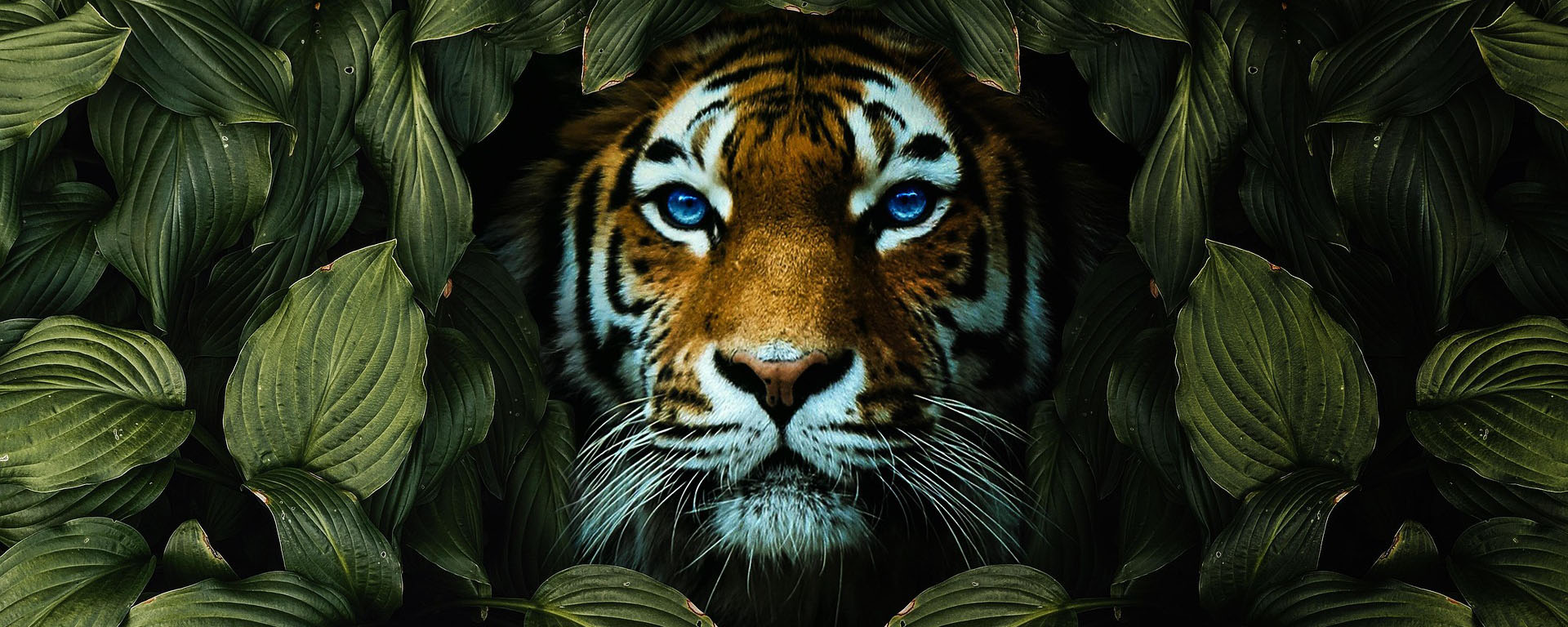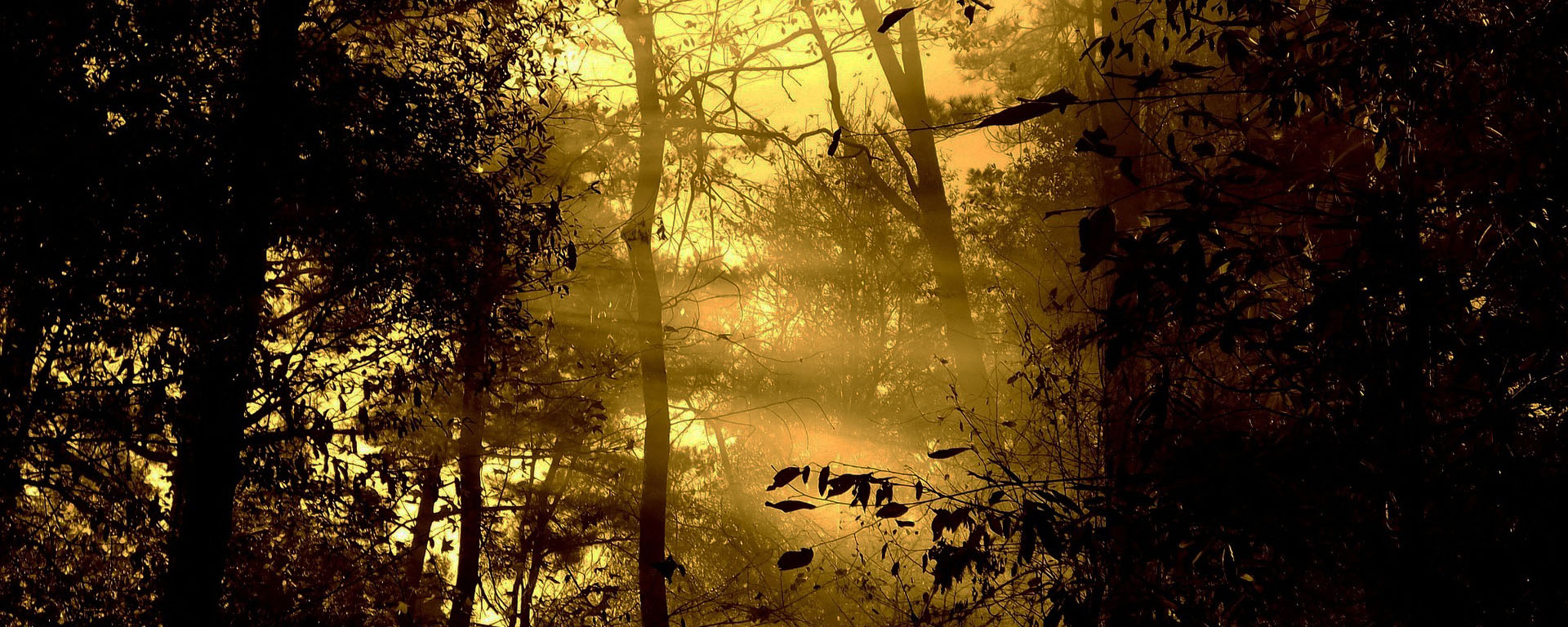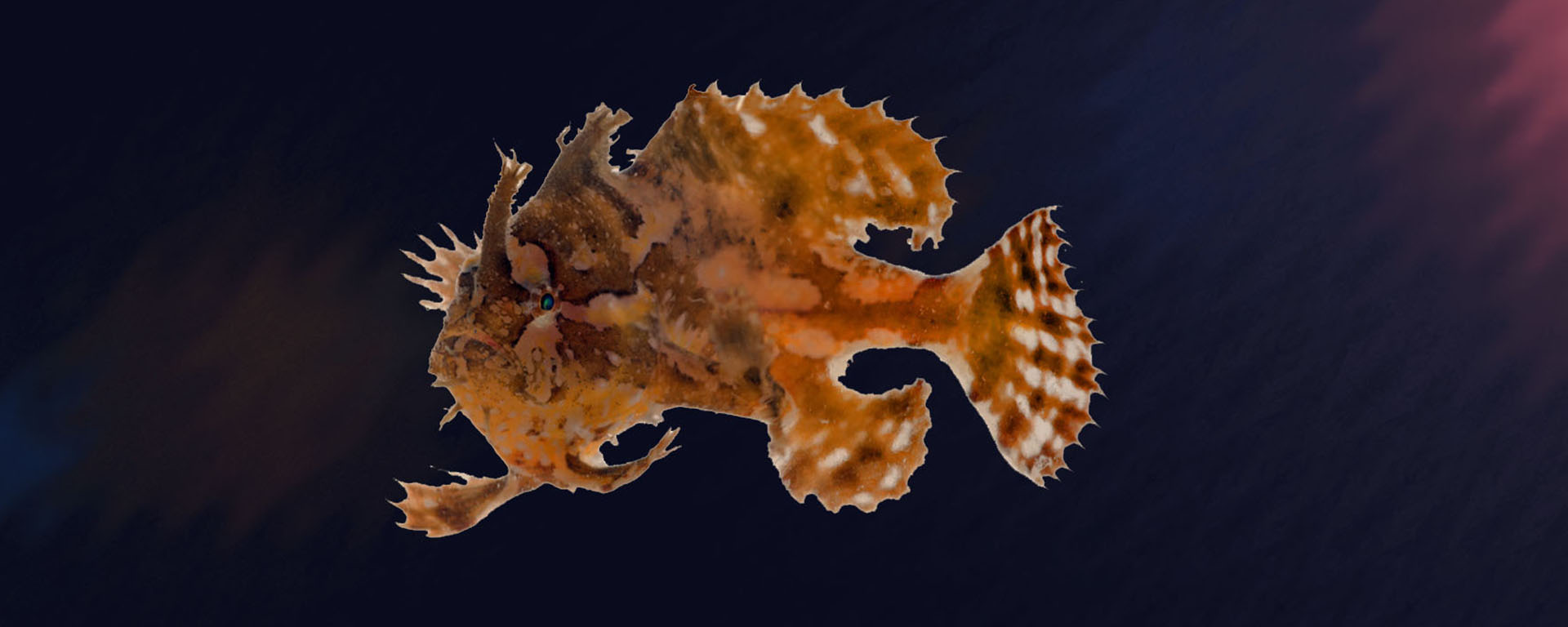When you see a tiger, it is always like a dream.
– Ullas Karanth
I love to see that Nature is so rife with life that myriads can be afforded to be sacrificed and suffered to prey on one another… The impression made on a wise man is one of innocence.
– Henry Thoreau
You’ve probably heard that tigers are endangered, and some of their subspecies critically so. But a century ago, 100,000 tigers roamed the world. They lived in a wide diversity of habitats, including rainforests, temperate and boreal forests, mangroves, river floodplains, and steppes. They ranged from Siberia and China through South Asia, including all of India and the islands of Java, Bali, and Sumatra; and from eastern China to the Caspian Sea and into regions of Turkey and Iran. Their historical habitat was virtually unbroken.
There are 5,500 tigers estimated in the wild today, and the only good news about that number is that it is up—thanks to the tireless work of conservationists—from about 3,000 in 2010. In one hundred years there has been a 95 percent reduction in tiger numbers. This drastic decline is not only about tigers but speaks to what is happening to all apex predators, including the big cats, wolves, wolverines, polar bears, crocodiles, raptors, sharks, tuna, killer whales, and others. (Scientists Christopher Wolf and Bill Ripple report that 64 percent of large terrestrial carnivores are threatened with extinction and 80 percent have declining populations.) It also reflects the devastation of the habitats that tigers once crowned: for tigers have been decimated in good part because of habitat destruction; and that habitat destruction has been amplified by the obliteration of tigers, for when apex predators go missing the quality of their homes declines profoundly.
The annihilation of apex predators is a foremost gauge of human tyranny, as humanity has positioned itself to usurp their place in nature’s order. Indeed, human beings endeavor to fashion themselves as the world’s “apex predator,” when they do not remotely meet the specifications. For one, humans are not carnivores, and those who work hard at making themselves such only succeed in elevating their odds for heart disease, hypertension, cancer, and other travails. What’s more, the real apex predators—fanged, clawed, sharp-toothed in the entire mouth, and formidable—can take a human out (in a fair fight) in the blink of an eye.
Importantly, in marked contrast with modern humans, apex predators safeguard biodiversity. The big cats—as well as the other predators, like wolves and sharks who were also once abundant and even more cosmopolitan in range—have rightly been called “umbrella species.” When conservation plans protect big predators, all nature within their territory gains protection. Protecting predators conserves nature expansively for two reasons: one, they need large-scale, connected space to thrive as individuals and species; and two, apex predators have ecological “cascading” effects that benefit all lifeforms within their range.
Predators are sometimes reviled for killing and supposedly making their prey suffer. This is a profoundly ignorant view. Predators make their prey species (typically herbivores) resilient. Indeed, we could say that the Tiger[1] creates the Red Deer (to name one prey species), by contributing to sharpening deer senses and making deer alert, swift, agile, strong, and physiologically well-integrated. Relatedly, the Tiger keeps its prey species healthy by eliminating the diseased and genetically unfit from the gene pool. The Deer, in turn, also creates the Tiger by “pushing” tigers to become stronger, swifter, stealthier, and keener in sense perception and awareness. (This mutual evolutionary honing of predator and prey, best understood as co-creative, has been labeled a predator-prey “arms race” revealing how difficult it is for modern humans to get away from a competitive zeitgeist.) While the Tiger and the Deer mutually shape and refine one another, arguably the Tiger is the paramount creator of the two: For out of every ten attempts tigers make to bring down prey, they succeed only once or twice. The Tiger has made its prey a most worthy adversary.
Yet big predators like the Tiger kill enough of their prey to keep them from overpopulating and thus overeating the plants. The very existence of the apex predator gives plants breathing space, allowing them to flourish as wildflower meadows, riparian zones, and forests that include big mother trees and the animals who live in those ecosystems. As plants thrive—with their herbivore “predators” kept in check—so do nectar sipping butterflies, fish and other river dwelling beings, birds who live in tree branches and eat seeds and fruit, and moisture loving amphibians who crawl in the shady, leaf-littered understories. Further enhancing these effects, apex predators keep medium-sized predators (called meso-predators) reined in, which gives birds’ eggs and small critters breathing space since meso-predators are prevented from overkilling them. When the birds, amphibians, reptiles, and small mammals can express their natural abundances, they consume fast-breeding insects and invertebrates keeping the latter from exploding in damaging numbers.
Undoubtedly, predation episodes sometimes result in the suffering of terror and pain of individual prey. At the same time, given an evolutionary advantage to killing prey swiftly, death from predation often comes quickly and with minimal suffering. Beyond this qualification, however, how do we weigh the suffering of the prey animal against the suffering of predators’ young ones if they starve? How do we weigh the experience of suffering of the predated individual against the suffering of an herbivore population that (with their predators eliminated) may overeat their plant foods and experience mass starvation? Moreover, next time you wonder whether apex predators cause suffering to their prey, ask the moose of northeastern America, who are suffering under obscene loads of ticks. Ask those moose whether they would not much prefer to have their predators back—wolves and cougars—whose trophic-cascade effects keep such parasites within tolerable levels. (The plague of Lyme-disease spreading ticks has also been bolstered by climate change.)
Another significant detail: Prey carcasses feed not only the tigers (and their cubs) usually more than once, but all the scavengers who come to feast. No part of the prey is wasted, for carrion is shared broadly at nature’s table. The cleaned bones feed the soil.
The big meat eaters are a blessing for nature’s vitality. By contrast, the meat-eating habit of humanity is fueling climate change, driving enormous habitat destruction due to grazing and feed production, causing extinctions, and backing the continued worldwide extermination of predators who are seen as threats to livestock. Humanity’s meat-eating habit is also bankrolled by the agony of domestic animals, raised in gulags and subjected to all sorts of depravity for the purpose of increasing the chronic and infectious disease load of their eaters. But under real apex-predator rule, all lifeforms thrive and together go about making the soil that is life’s foundation, the fresh air that all life breathes, and the pure waters without which no life is possible. With apex predators wide roving and in healthy numbers, the natural order remains vibrant.
Some believe that speaking of nature’s order, not to say nature’s balance, is a romanticization of the natural world which is allegedly full of suffering, struggle for survival, and strife over resources. This view of nature is a projection of the human-supremacist mode of operation. Just as there is a tendency to naturalize unnatural habits (e.g., carnivory) by calling humans “apex predators,” so there is a tendency to naturalize human supremacy by projecting its cruelty, violence, and inflictions of suffering upon nature’s character.
Such views, however, are easily belied by the facts. For not only do predators protect biodiversity, but biodiversity itself tends to increase over time, which would not be an expected outcome in a world characterized foundationally by strife and scarcity.
Biodiversity increases over time because of a simple strategy built into nature’s design: avoiding/reducing competition by means of life’s “adaptive radiation.” Rather than heightening antagonism over space and resources, lifeforms evolve to occupy new niches (henceforth unoccupied) and to utilize new resources (henceforth unutilized). Lifeforms evolve new traits to make a living on previously “virgin territory.” (Think about the mites specialized to live on your eyelashes and extrapolate from that example to uncountable evolved specialties of beings large and microscopic.) The same logic applies to the principle of dispersal, which is a general life strategy but especially pronounced among apex predators who strike out to discover new territories, food sources, and mates thereby preempting competition and conflict, while also avoiding the downsides of inbreeding and strengthening their bodies and wills too boot.
Genetic mutability and behavioral flexibility constitute the evolutionary means by which strife and scarcity are tempered, while simultaneously life’s burgeoning is assured in all manner of places not to say across the entire planet. That’s life’s reality and not a romanticization—though there’s a lot to be said for having a romance with the reality of life on Earth.
Through radiating adaptations in all directions, life creates what ancient thinkers called a pleroma (a Greek word meaning “fullness”). Life disperses to fill geographical space and also reinvents itself to fit various (micro and macro) habitats. It’s like Russian dolls inside Russian dolls all the way down. As Vladimir Vernadsky observed, life increases the functional area of planet Earth. For example, coral reefs, forests, and even tiny habitats such as mosses add multiple dimensions to surface area thus creating niche opportunities for life. Multiplied dimensionality is also featured via morphological diversity: A prairie, for example, is composed of numerous grass species intricately entwined, contributing to varying the surface area of the prairie ecosystem. By the same token, modern humans have been eradicating life-amplified dimensionality and functional area, having massively deforested Earth, wiped out half the coral reefs, homogenized habitats (for example, by replacing prairie with cornfields and ancient diverse forests with tree plantations), and strip-mined three-dimensional underwater habitats by trawling.
At the top of a finely filigreed, dynamic “trophic pyramid” are the big predators. Their life enhancing effects are so powerful, they’ve been called the big things that run the world. (It’s equally true that “little things run the world” but that’s another story.) Ecologist James Estes urges that we stop regarding carnivores as planetary “passengers” and start thinking of them as “drivers.” The apex predators run the world by keeping the pyramid tiers in right proportion and by honing their prey species into physically and mentally exquisite beings. Predators are the architects of breathtaking beauty, camouflage, cunning, speed and stillness, alertness, and robust health. Apex predators do not reign as tyrants but as magnanimous kings and queens who dispense bounty upon their subjects. In the words of tiger expert John Seidensticker, “The tiger is an irreplaceable link in the process and wholeness of life.”
The biodiverse world of 100,000 tigers (and please generalize regarding other predators) is gone—a horrendous tradeoff not only for the lifeforms displaced or extinguished without a trace, but also for the well-being of humans who have fallen under the spell of an ideology that construes tyranny as power and superiority. The rich in vitality Tiger’s world has fallen to industrial animal and crop agriculture, cities and sprawling settlements, industrial parks and shopping centers, gargantuan quantities of commodities, infrastructure galore, and nonstop encroachment of whatever wild nature remains. Given human invasion of predators’ habitats, huge reductions of their prey populations, and landscape takeovers by the livestock industry, it is crystal clear who is responsible for the lamented consequence of “human-wildlife conflict.”
At a total of 1.3 trillion tons of manmade stuff, the technomass now outweighs Earth’s biomass. Humans outweigh all wild animals 10 to 1, and the biomass of humans themselves is half as much as the livestock humanity has colonized the planet with—along with the billions of tons of plastic, concrete, asphalt, metals, and sand and gravel materials used in construction. A world of abundant and diverse life has been traded for one depleted of biodiversity and staggering under the weight of dead matter and waste. A creative biosphere has been replaced with a human-livestock-technomass occupied planet with scattered areas of wild nature that remain ever at risk. This is not the work of a sapiens species. Rather it is the folly of an imprudent, arrogant, and incredibly stupid worldview that humanity has yet to wake up from.
Tigers (lions, wolves, raptors, sharks, and so on) have been decimated and the ecosystems they sustained degraded and simplified into far less resilient expressions. While this situation is often assumed to be irrevocable, it can be undone if we face the truth of the appalling tradeoff and make reparations to reverse it. Letting Earth’s apex predators rebound worldwide is key to ending runaway ecological deterioration and enabling the planet’s vibrancy to return. Protecting the big carnivores—which requires protecting large-scale areas of wild nature—is the noblest gesture Anthropos can make. It is also the most intelligent gesture possible, because it opts for a world that is bountiful source of the precious substances of fertile soil, clean air, pure water, vibrant nature, and uncountable lifeforms. These gifts of wild Earth are exceptionally good for the human body and irreplaceable treasures for the human spirit. They are also the only planetary qualities that can ensure the robustness and longevity of our species.
A century ago, there were not only plentiful tigers ranging widely there were also 9 subspecies of them. Tigers were ecologically robust and they were evolving. Tigers were diversifying (likely) into new species. That’s what a subspecies potentially is: a new species in the making. For insight into this process, rather than trying to imagine what new species tiger subspecies might have become, we can look back to where the Tiger came from.
Tigers belong to the genus Panthera which includes the big roaring cats—lions, leopards, and jaguars. This scientific designation indicates that the Panthera cats once had a common ancestor that diversified first into several subspecies, and then, with enough time and geographical separation, into different species. The Tiger hails from what was once a subspecies of the common ancestor of the Panthera cats. After the Tiger evolved, it splintered into several subspecies continuing the amazing journey of evolution. But that journey has been cut short by (the stupidity of) man. At least three Tiger subspecies—the Caspian, Java, and Bali tigers—have been driven to extinction. Who they were is no more and who they might have become will never be.
Tigers are endangered not only because human and livestock numbers exploded, food production skyrocketed, consumption and trade went off the charts, and the technosphere surpassed the weight of living beings. Tigers have been annihilated deliberately by human supremacy. Their beauty coveted, they’ve been slaughtered for their coats. Their stealth coveted, they’ve been slaughtered for sport. Their power coveted, they’ve been slaughtered for their bones. Their virility coveted, they’ve been slaughtered for their genitals. To feed these cravings for tiger body parts, in the 1990s “tiger farms” were brought online, piling more depravity on top of the continued poaching of wild tigers. Captive and wild ones are murdered and their corpses hewed for the acquisition of status, trophies, strength, virility, and health. But the only thing that slaughtered tigers have ever granted is a clear exhibit of the mental sickness that human supremacy breeds.
An indispensable ingredient for reclaiming the planet of Tiger magic is finding the courage to affirm our unconditional admiration for apex predators, who invigorate, beautify, and safeguard nature. Our love for them is already real—otherwise humanity would not have devoted countless myths, spiritual imagery, art, poetry, and movie reels celebrating their grace and power. Even the corrupt appropriation of their body parts expresses a toxic love waiting to be purified. Recognizing love’s reality demands that humanity admit that they are the ones at the top of the food web. If we visit territories that big carnivores inhabit—land and sea wildernesses—we must do so knowing the risks.
Giving freedom back to apex predators means returning to them expansive and reconnected geographies. Then, they can flourish again in healthy numbers and restore nature to health. Where they live, we are not entitled to encroach, nor to install human settlements, agricultural fields, grazing lands, infrastructures, or extractive (including industrial fishing) operations. Finding the generosity to pull out of their habitats is the pathway to belong with them. The Earth apex predators will revive will be vibrant, of habitable weather, a planet that will “pay us back” with knowledge, medicine, health, spiritual experience, aesthetic elation, and wisdom—the wisdom of understanding our place in nature’s order.
Large-scale autonomous nature—made wild especially by the big carnivores who electrify landscapes by the mere presence of their paw prints—will be a commonwealth of all life, and property of no human nation: places we may visit but not remain. In the words of naturalist and evolutionary biologist, E.O. Wilson, “We need freedom to roam across land owned by no one, but protected by all… Only in what remains of Eden, teeming with lifeforms independent of us, is it possible to experience the kind of wonder that shaped the human psyche at its birth.” Only one choice can make this aspiration reality: Humanity must substantially shrink its economic activity, the livestock population, the human population, and the reach of the technosphere, while setting free (at least) half of planet Earth. This transformation harbors no loss—but to the contrary: Humanity will emerge stronger, in all ways, when it is leaner and encompassed by Eden.
Sources
Barash, David (2025). “Ten Misconceptions about Evolution.” Nautilus. 10 Misconceptions About Evolution.
Butler, Tom (2002). Wild Earth: Wild Ideas for a World out of Balance. Milkweed editions.
Dulvy, Nicholas et al. (2024). “Ecological Erosion and Expanding Extinction Risk for Sharks and Rays.” Science 386(6726). Ecological erosion and expanding extinction risk of sharks and rays.
Eisenberg, Cristina (2011). The Wolf’s Tooth: Keystone Predators, Trophic Cascades, and Biodiversity. Island Press.
Estes, James et al. (2011). “Trophic Downgrading of Planet Earth.” Science 333 (July 15): 301-306.
Kimmerer, Robin (2003). Gathering Moss: A Natural and Cultural History of Mosses. Oregon State University Press.
Matthiessen, Peter (2000). Tigers in the Snow. North Point Press.
Overbye, Dennis (2024). “A Century of Human Detritus, Visualized.” New York Times December 27.
Plato (1961). “Timaeus.” In The Collected Dialogues of Plato, Hamilton, E. and H. Cairns, eds., Princeton University Press, 1151-1211.
Rosen, Jill (2024). “A New Visualization of Everything on Earth.” Johns Hopkins University. A new visualization of everything on Earth.
Schmitz, Oswald and Magnus Sylvén (2023). “Animating the Carbon Cycle: How Wildlife Conservation Can Be a Key to Mitigate Climate Change.” Environment: Science and Policy for Sustainable Development 65:3, 5-17, DOI: 10.1080/00139157.2023.2180269.
Seidensticker, John (1996). Tigers. Voyager Press.
Soulé, Michael and Reed Noss (1998). “Rewilding and Biodiversity: Complimentary Goals for Continental Conservation.” Wild Earth Fall: 19-28.
Stolzenburg, William (2008). Where the Wild Things Were. Life, Death, and Ecological Wreckage in a Land of Vanishing Predators. Bloomsbury.
Terborgh, John (1988). “The Big Things that Run the World—A Sequel to E.O. Wilson.” Conservation Biology 2(4): 402-403.
Vernadsky, Vladimir (1998). The Biosphere. Copernicus press.
Wilson, E.O. (1987). “The Little Things that Run the World.” Conservation Biology 1(4): 344-346.
Wilson, E.O. (1999/1992). The Diversity of Life. W.W. Norton & Company.
Wilson, E.O. (2006). The Creation: An Appeal to Save Life on Earth. New York: WW Norton.
Wilson, E.O. (2016). Half Earth: Our Planet’s Fight for Life. New York: W.W. Norton.
Wolf, Christopher and William Ripple (2018). “Rewilding the World’s Large Carnivores.” Royal Society Open Science. 5:172235.
WWF. Phasing out Tiger Farms. Phasing Out Tiger Farms.
[1] Capitalizing animal names, in the singular, denotes that I’m referring to the species. The convention avoids the constant repetition of the word species.
Latest Blog
-
 Regarding misanthropy 11 July 2025
Regarding misanthropy 11 July 2025 -
 Mirror, mirror on the wall… (eco-hacking AI) 12 April 2025
Mirror, mirror on the wall… (eco-hacking AI) 12 April 2025 -
 WITNESS: Tiger magic 24 March 2025
WITNESS: Tiger magic 24 March 2025 -
 The secret garden 20 December 2024
The secret garden 20 December 2024 -
 WITNESS: Tales from the Sargasso Sea 24 October 2024
WITNESS: Tales from the Sargasso Sea 24 October 2024



